Uganda, like many parts of the world, flashes a complete volcanic activity on the East African Rift Valley border, the flushes to compete for different volcanic peaks. These mountains that are now extinct are protected within the confines of national parks and offer stunning areas for trekking for both inexperienced hikers and experienced mountaineers who welcome a challenge.
The enthusiasts’ hikers should plan their mountaineering trips to Uganda and have access to different positions like no other. Whether you’re an experienced hiker who has had years of practice in conquering peaks or a first-timer looking to take your adrenaline travels up a notch, to explore the wild, peaks of the world and less-traveled regions, be assured you will come back with unforgettable memories that took you to new heights and more discovery.
The Rwenzori Mountains, Africa’s highest block mountains, border Uganda on the west; Mt. Elgon, Africa’s oldest and largest solitary volcano, borders Uganda on the east; and the extinct Virungas Mountains, home to some of the world’s last remaining mountain gorillas, borders Uganda on the extreme southwest. The distinction that Uganda’s peaks present is the favorable Ugandan climate and the outstanding scenery around and on these mountains, with all manner of wildlife and plants, which make hiking and mountaineering in Uganda a truly unique and rewarding experience.
All the mountaineering expeditions involve challenging treks on remote trails in variable weather conditions for up to 8–12 hours a day. This depends on the region and grade of the trip. Some include traveling on snow and ice, which requires you to use crampons, mountaineering boots, fixed ropes, and ice axes. Hikers are expected to carry up to 12-15 kg at various stages of the expedition, and reasonable portions of your trip will be spent at an altitude that will provide you with incredible views above the clouds and the surrounding attractions as you camp at the base of magnificent mountain peaks.
Hiking is not for faint-hearted people since you will need extra fitness and be comfortable in adverse weather conditions in remote areas. This is a particularly important intermediate-level trip that will need an experienced guide at hand to discuss your preparations in the lead up to the trip.
Hiking Mount Rwenzori
Mount Rwenzori is the highest block mountain in Uganda, formally known as the Mountains of the Moon. It is always a snow-capped mountain, and hiking to the summit is challenging but rewarding with different vegetation cover surrounding the landscape covered with snow ice. Mount Rwenzori is the most spotted hiking mountain in Africa, and hikers are welcomed by the diversity of flora and fauna that grant you beautiful experiences. There are different trails to use, but initially, there are 2 major trails that provide access to the summit. These are some examples:
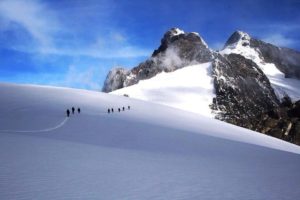
The Central Circuit trail was the first trail to be followed by climbers, which provided entry to the Rwenzori summit for so many years before they introduced the kilembe trail. The central circuit trail is the most demanding and long, providing a circular hike of the Towering Rwenzori. The central circuit takes 7-days to hike, starting from Nyakalengija to Mihunga. The route slants the Bujuku valley, passing through Nyabitaba for well-seasoned hikers before reaching the Peaks of the Mountain.
The Kilembe trail is the newly opened route that climbs the southern slopes of the Rwenzori from the Kilembe trailhead in Kasese Town. The trail is extremely imposing with various landscapes. The trail is composed of long routes through the wonderful Nyamwamba Valley and meanders through glacial lakes and dazzling viewpoints before tethering with the Central Circuit. The trail exposes you to different climate adjustments and beautiful landscapes. check for
Mount Rwenzori is distinct from Mt. Kenya and Mt. Kilimanjaro. Although they are not the highest, they offer much more experience and adventure in terms of diversity than any other mountain, right from the plant life, vegetation cover, birds, and animal species, including the long-horned chameleon that originates from the Rwenzori Mountains.
The Rwenzori Mountains are the highest group of mountains in Africa and are also known as the Mountains of the Moon. The mountain range is 120km long and 65km wide. Travelers should seek a 9-day trekking trip or a 7-day hike on Mount Rwenzori to discover the park’s natural beauty and its highest, most exhilarating snow-capped summits in order to fully appreciate the mountain’s majestic views.
Hike Mount Elgon
Mount Elgon is located in eastern Uganda, bordering Kenya and Uganda. It is the second-highest mountain in Uganda, with the highest peak being Wagagai at 4,231m, and is ranked fourth in East Africa. The mountain is not tiring to climb since you don’t need special equipment or hiking techniques to do it. Mt. Elgon is an extinct volcano that erupted 24 million years ago, which makes it the oldest and largest extinct volcano in the world with a base area of 50km x 80km and holds the largest caldera at about 60km long and 40km wide.
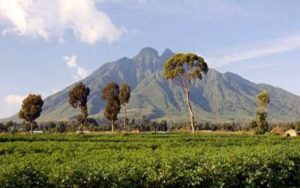
Hiking on mount Elgon can be done on several trails varying in length, and there are currently 3 major trailheads for the hike, such as the Sasa River Trail, Sipi Trail, and Piswa Trail, that all lead to the mountain summit, the Wagagai peak, and descend to Bumasola. Most hikers find climbing Mount Elgon the most interesting introduction to more challenging hikes in other volcanoes in East Africa since it’s not overcrowded and very accessible all year round with the same diversity of attractions as with low elevation and cool climate. Hiking. Mount Elgon has several hiking trails, including the following:
The Sipi trail is the longest trail to the Wagagai peak. It takes 5-6 days to clamber up to a 56km round trip. It starts from the forest exploration center in Kapkwai village, giving you more options to enjoy the hike. The 5–6 days spent hiking the mountain through ecological zones will provide you with spectacular features, including farmlands, forests with mixed vegetation, waterfalls, caves, and Caldera Lake. The Sipi trail will reward you with spectacular features towards the summit, such as rock sculptures, a caldera, the Sipi River, different plant species, Siyo Cave, Kajeri Valley, and a world-cup-shaped rock.
The Piswa trail takes about 7 days, a 49-kilometer roundtrip. It offers an experience of viewing wildlife animals and provides beautiful scenery of the Karamoja plains together with the Nandi and Kapeguria hills found in Kenya. This trail is the most pleasant but the longest of all the trails in Mount Elgon that require physical fitness. Though it’s less demanding, the trail starts at Kapkwata village in the far East, near the border between Uganda and Kenya, and wonders through wood plantations up to the Podocarpus forest.
Another hiking trail in Mount Elgon is the Sasa trail. It’s more recommended by most hikers for its access to public transport. It’s the shortest trail, though it’s considered substantial to hike up to the peak. The trail takes only 4 days to reach the Wagagai peak and descend. It starts from Budadiri town at an elevation of 1,250m and passes through the Bamasaba farmland settlements to experience their life that involves public circumcision. Ascending using the Sasa trail offers an experience to view more features and attractions, it takes about 4 hours to reach the Wagagai peak and while descending, you can use different trails.
Hike the Virunga mountain ranges of Mgahinga National Park
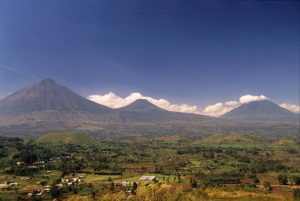 Mountain hiking within Mgahinga National Park is controlled by the three volcanoes that form a chain of Virunga volcano ranges that extends to three countries, such as Mount Gahinga, Mount Sabinyo, and Mount Muhavura. Each of these mountains can be hiked up to its summits, and each of them usually lasts a full day. Mount Karisimbi and Mikeno in Rwanda; Mount Nyiragongo (3,470m) and Mount Nyamuragira (3,058m) in D.R. Congo are also part of the Virunga volcano range. Unfortunately, the two volcanoes in D.R. Congo are still active, and Mount Nyiragongo erupted some months ago.
Mountain hiking within Mgahinga National Park is controlled by the three volcanoes that form a chain of Virunga volcano ranges that extends to three countries, such as Mount Gahinga, Mount Sabinyo, and Mount Muhavura. Each of these mountains can be hiked up to its summits, and each of them usually lasts a full day. Mount Karisimbi and Mikeno in Rwanda; Mount Nyiragongo (3,470m) and Mount Nyamuragira (3,058m) in D.R. Congo are also part of the Virunga volcano range. Unfortunately, the two volcanoes in D.R. Congo are still active, and Mount Nyiragongo erupted some months ago.
Hiking all three volcanoes starts at the Ntebeko Visitor Center in Mgahinga National Park with a briefing. For heavy luggage and equipment, porters are available for hire at a reasonable fee to help you undertake a hiking adventure with much pleasure. Briefing starts at 7:30 am-8:00 am begins at 7:30 am in order to complete the full-day hike to one of the three volcanoes.
Hiking Mount Sabinyo (3,669m)
Mount Sabinyo is shared by Uganda, Rwanda, and D.R. Congo, so it acts as a gateway to the three countries. Mount Sabinyo can only be accessed from the Uganda side. The hike to the Peak of Sabinyo takes about 8 hours to complete the 14 km round trip. The hike involves trekking through a steep slope and ridge to the peak. You become overwhelmed by the beautiful views of different features within the three countries, including the standalone Lake Kivu in between Rwanda and D.R. Congo; the Rwenzori peaks; Lake Bunyonyi; and the blemished human communities that are spotted surrounded by forests and plantations.
While descending needs attention since you need to take precautions on the ladders, especially during bad weather. Travelers prefer a combined hike with gorilla trekking activity in the park and for that case, you can check for our 4-days mt sabinyo trekking and hiking.
Mountain Gahinga (3,474m)
Mount Gahinga is the smallest volcano among the three volcanoes. It fits perfectly in between the Muhavura and Sabinyo Mountains. It’s also the simplest volcano to hike on. Even a first-time hiker can survive. The hike takes about 6–8 hours roundtrip. The Gahinga trails rise in beautiful bamboo and afro-montane with a swamp-filled crater and lobelia tree species on its peak, which are pounding places for endangered golden monkeys in the forest, so you can encounter them on a clear day.
Hiking Mount Muhavura (4,127m)
Mount Muhavura stands at an elevation of 4,127m above sea level and is the highest volcano among the three mountains in Mgahinga national park. Climbing to the peak takes about 8 hours to ascend and descend the 12 km hike. It’s regarded as the guide to other volcanoes in the park for its ultimate views of all the Virunga mountain ranges in the Albertine rift valley, the Rwenzori snow-capped mountain peaks, and the sunshades of the Bwindi impenetrable forest.
Uganda provides the best hiking trail experience to avid hikers not only in the mentioned locations but also in other manageable locations such as hiking to the top of Murchison waterfalls, kagulu hills, and Mount Moroto in northeastern Uganda. Uganda not only offers mountain hiking and climbing but a number of activities, including nature walks, wildlife safaris, chimpanzee trekking, gorilla trekking, golden monkey trekking, cultural safaris, and birding trips, to mention but a few.
Necessary requirements for hiking
When devising a hiking adventure tour, there are various essentials you need to pack before starting your journey. Apart from being physically fit, the following should not be missing from your safari bag prior to the hike:
Hiking boots, a warm jacket, a pair of gloves, a hut to protect from the sun, a first aid kit in case of emergencies, food in case you spend more than a day camping on the mountain, and a tent if possible, but it can be hired at the park, as well as other personal essentials such as Vaseline, a lighter, toiletries, insect repellant, enough snacks, and other essentials.
If you are planning to hike any of the peaks on Mount Rwenzori, the park provides crampons, ice axes, ropes, and hiking sticks to hikers, but you may decide to pack your own.
Hiking costs vary by the mountain, but the Rwenzori mountains cost between $315 and $2,000 depending on the number of people traveling and the length of time spent. The 315 $ goes for 2 people for 3 days and rises to 2000 $ for more than 10 days, but the price lowers if you are 3 groups or above. However, Mount Elgon hiking costs go for 50 $ per person, Mount Muhavura costs 75 per person, Mount Gahinga costs 80 $ per person, and Mount Sabinyo costs 85 $ per person.

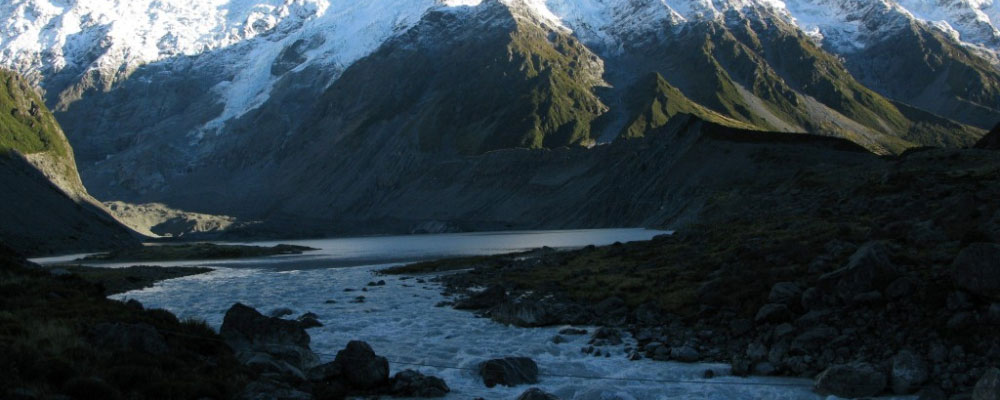
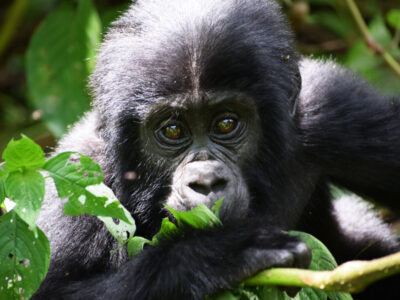
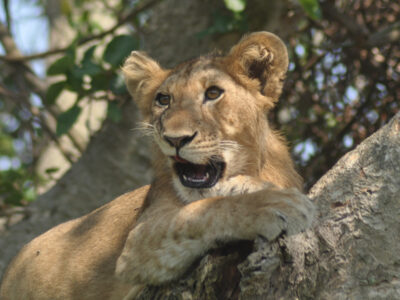
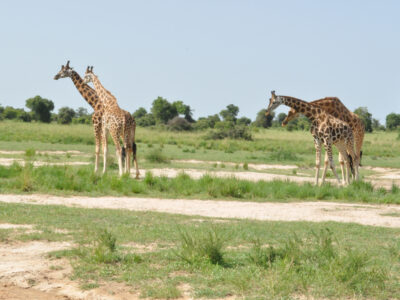
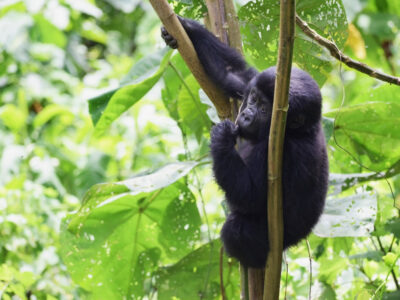
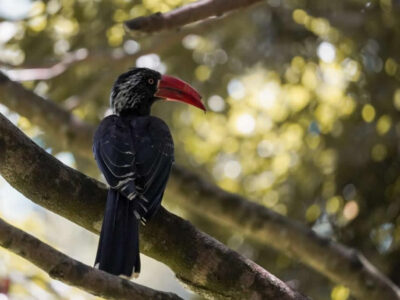
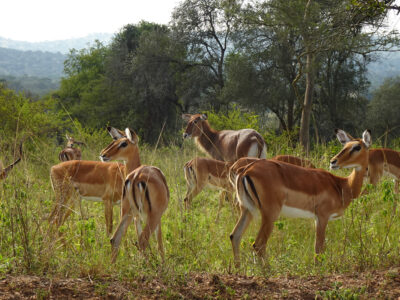
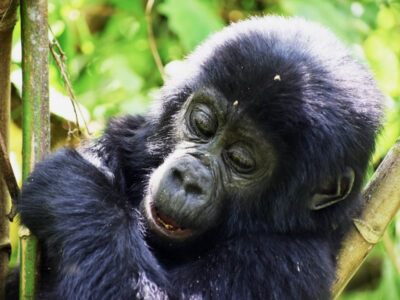
One Reply to “Mountain climbing in Uganda”